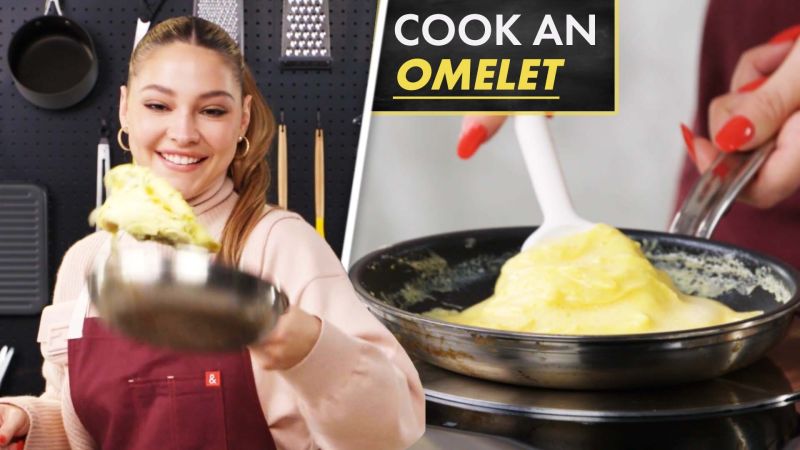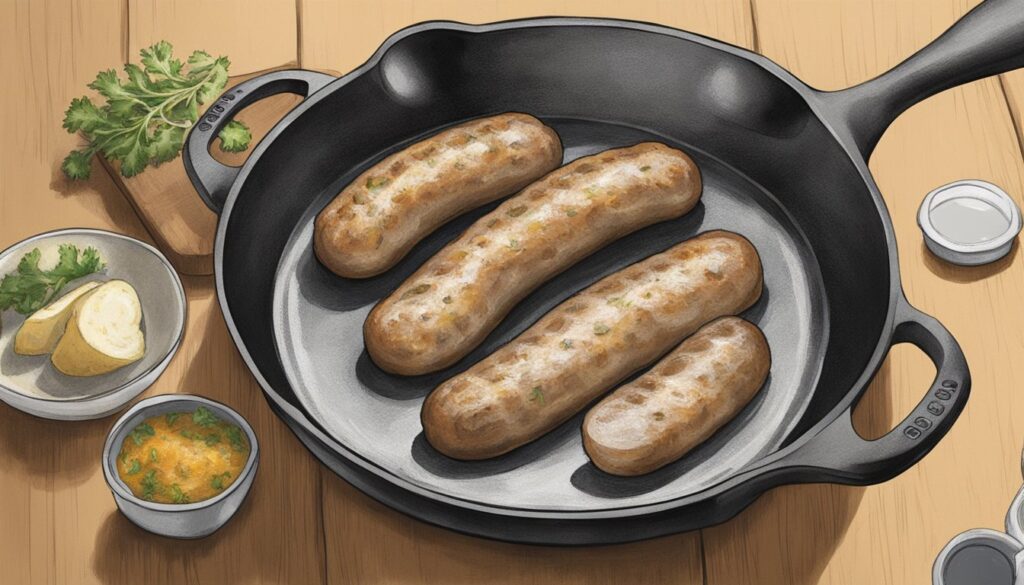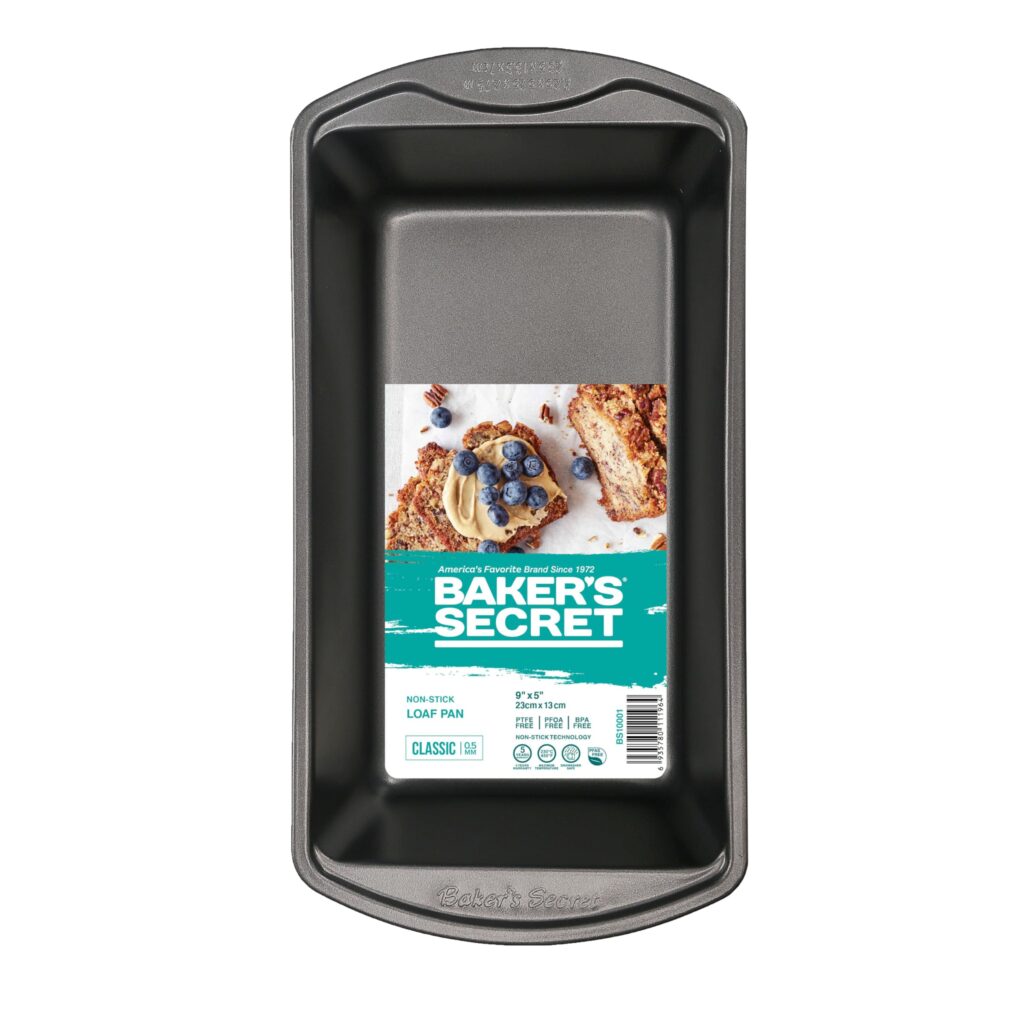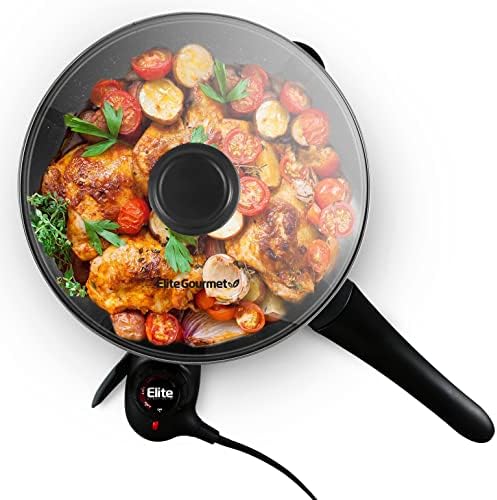Skillet is an American Christian rock band formed in 1996. The band is known for its powerful lyrics and dynamic performances.
Skillet has gained a massive following due to its unique blend of rock, industrial, and symphonic elements. The band, originally from Memphis, Tennessee, consists of John Cooper, Korey Cooper, Jen Ledger, and Seth Morrison. Over the years, Skillet has released several successful albums, including “Collide,” “Comatose,” and “Awake.
” Their music often addresses themes of faith, struggle, and resilience. Fans appreciate Skillet for their energetic live shows and inspirational messages. The band’s ability to cross genres has helped them appeal to a diverse audience, making them a standout in the Christian rock scene.
Table of Contents
ToggleThe Essence Of Skillet Cooking
Skillet cooking is a timeless culinary method. It blends tradition with versatility. The skillet’s unique design makes it a kitchen essential. You can fry, sear, bake, and sauté with ease. Its ability to retain heat ensures even cooking. This results in rich flavors and perfect textures.
Historical Significance
Skillets have a rich history. They date back to ancient times. Early versions were crafted from clay and metal. These tools evolved through the ages. Cast iron skillets became popular in the 18th century. They were durable and affordable. Skillets were a staple in pioneer kitchens. They cooked hearty meals over open fires. Today, skillets continue to be beloved kitchen tools. They connect us to culinary traditions of the past.
Skillet Varieties And Materials
Skillets come in various materials. Each type offers unique benefits. Here are some common skillet materials:
- Cast Iron: Retains heat well and adds iron to food.
- Stainless Steel: Durable and resistant to rust.
- Non-stick: Easy to clean and reduces the need for oil.
- Carbon Steel: Lightweight and heats up quickly.
Choosing the right skillet depends on your cooking needs. Cast iron is ideal for slow-cooked dishes. Stainless steel is perfect for browning meat. Non-stick skillets are great for delicate foods. Carbon steel is excellent for high-heat cooking.
Skillets also come in different shapes and sizes. Some have long handles; others have helper handles. There are skillets with smooth or ribbed surfaces. The variety allows for diverse cooking techniques. This makes the skillet an adaptable kitchen tool.
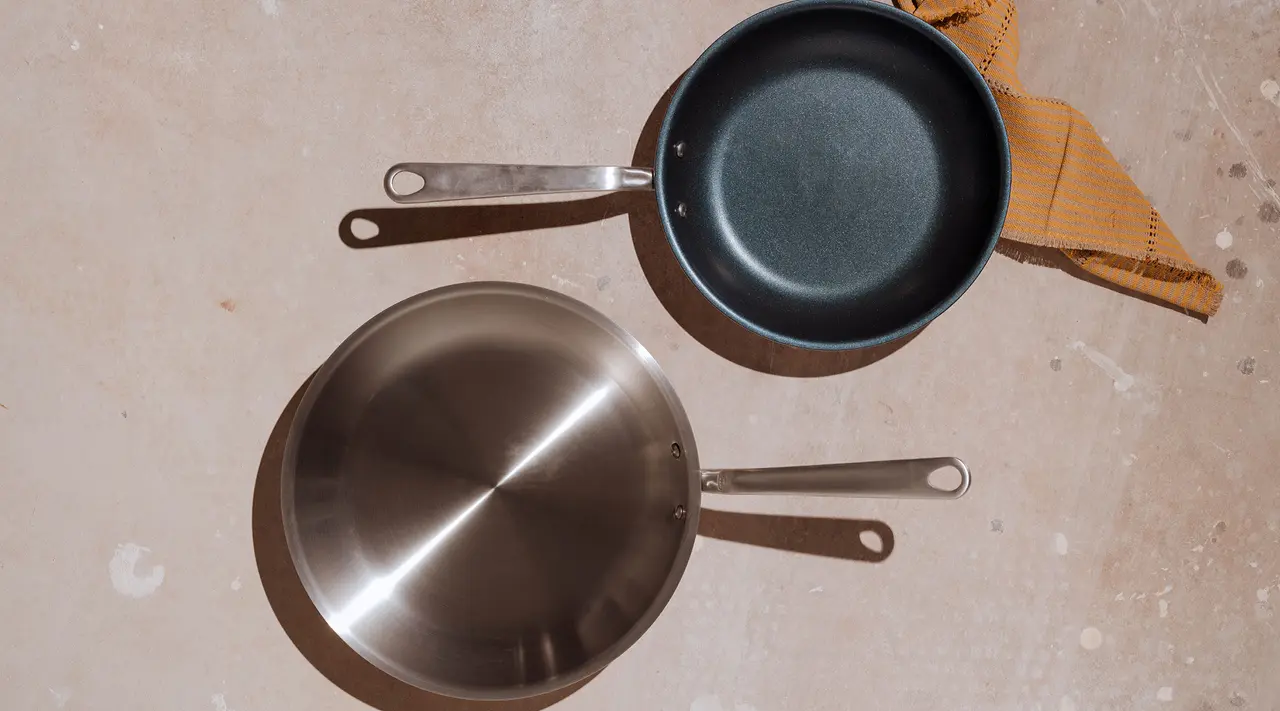
Credit: madeincookware.com
Why Chefs Swear By Skillets
Skillets are a staple in kitchens. They offer unique benefits for cooking. Many chefs prefer them over other cookware. The reasons are clear. Let’s explore why skillets are so beloved.
Versatility In The Kitchen
Skillets can handle a variety of cooking tasks. They are perfect for frying, searing, baking, and more. You can use them on the stove, in the oven, or over a campfire. This flexibility makes them a favorite among chefs.
- Frying: Perfect for crispy bacon or golden potatoes.
- Searing: Ideal for getting that perfect steak crust.
- Baking: Great for cornbread, pies, and even cookies.
Using one skillet for multiple tasks saves time and space. It reduces the need for multiple pans. This is especially useful in small kitchens.
Unmatched Heat Distribution
Heat distribution is crucial for even cooking. Skillets, especially cast iron, excel at this. They heat up evenly and retain heat well. This ensures food cooks uniformly.
| Material | Heat Retention | Heat Distribution |
|---|---|---|
| Cast Iron | Excellent | Even |
| Stainless Steel | Good | Moderate |
| Non-stick | Fair | Moderate |
Consistency is key in professional kitchens. Chefs need reliable cookware. Skillets offer that reliability. They provide even cooking every time.
Also, skillets can handle high temperatures. This is essential for certain cooking methods. For example, searing meat requires high heat. Skillets can withstand this, ensuring perfect results.
Selecting The Perfect Skillet
Choosing the right skillet can transform your cooking experience. The perfect skillet should suit your needs and cooking style. Consider these essential factors: size and material.
Size Matters
The size of the skillet affects cooking. A larger skillet can cook for a family. Smaller skillets are ideal for single servings or small dishes. Common skillet sizes are:
- 8-inch: Best for single servings or small dishes.
- 10-inch: Versatile, suitable for most recipes.
- 12-inch: Great for family meals and larger quantities.
Assess your cooking habits. Choose a size that complements them.
Material Considerations
The material of your skillet affects performance and durability. Here are common materials:
| Material | Pros | Cons |
|---|---|---|
| Cast Iron |
|
|
| Stainless Steel |
|
|
| Non-Stick |
|
|
Pick a material that matches your cooking style and maintenance preference.
Mastering Skillet Maintenance
Proper maintenance keeps your skillet in top shape. It ensures a long life. Here’s how to master skillet maintenance with ease.
Seasoning Your Skillet
Seasoning your skillet is crucial. It prevents rust and creates a non-stick surface. Follow these steps:
- Wash your skillet with warm, soapy water.
- Dry it thoroughly with a clean towel.
- Apply a thin layer of vegetable oil.
- Heat the skillet in the oven at 375°F for one hour.
- Let it cool completely in the oven.
Repeat this process every few months. This keeps your skillet in perfect condition.
Cleaning Do’s And Don’ts
Cleaning your skillet the right way is essential. Here are the do’s and don’ts:
| Do’s | Don’ts |
|---|---|
| Use warm water and a stiff brush. | Use dish soap or harsh chemicals. |
| Dry it immediately after washing. | Leave it to air dry. |
| Apply a light coat of oil after each clean. | Scrub with abrasive sponges. |
Follow these tips to keep your skillet clean and functional. A well-maintained skillet lasts longer and cooks better.
Skillet Cooking Techniques
Cooking with a skillet can elevate your dishes. The right techniques make a difference. Learn to sear and deglaze for tastier meals.
Searing Perfection
Searing locks in flavors. Start with a hot skillet. Add a small amount of oil. Place your meat or vegetables in the skillet.
Let them cook without moving. This creates a crisp, brown crust. Use tongs to flip the food. Sear the other side the same way.
Here are the key steps to perfect searing:
- Preheat the skillet until very hot.
- Add a thin layer of oil.
- Place the food in the skillet without crowding.
- Allow the food to develop a brown crust.
- Flip and sear the other side.
The Art Of Deglazing
Deglazing captures all the flavors left in the skillet. After searing, there are brown bits stuck to the pan. These bits are full of flavor.
Pour a liquid into the hot skillet. Common choices are wine, broth, or water. Use a wooden spoon to scrape the bits off the bottom.
The liquid will reduce and create a tasty sauce. Deglazing adds depth to your dish. It’s a simple step but makes a big impact.
| Step | Description |
|---|---|
| 1. Sear | Cook food until brown crust forms. |
| 2. Add Liquid | Pour wine, broth, or water into the skillet. |
| 3. Scrape | Scrape brown bits from the pan bottom. |
| 4. Reduce | Let the liquid simmer and reduce. |

Credit: www.wayfair.com
Transforming Recipes With A Skillet
Using a skillet can change your cooking game. It’s a versatile tool for many dishes. From breakfast to dinner, the skillet makes cooking easy and fun.
Breakfast Delights
Start your day with a tasty breakfast. The skillet is perfect for making scrambled eggs. Just add eggs, milk, and your favorite veggies.
For something sweet, try pancakes. Mix the batter and pour it into the skillet. Flip when bubbles form, and enjoy.
Another great option is French toast. Dip bread in a mix of eggs and milk, then cook in the skillet until golden brown.
Dinner Masterpieces
The skillet shines at dinner time too. Make a delicious stir-fry with vegetables and chicken. Just add soy sauce for flavor.
For a hearty meal, cook a steak. Season the steak and sear it in the hot skillet. Finish in the oven for desired doneness.
Create a one-pan meal with skillet lasagna. Layer noodles, sauce, and cheese. Cover and simmer until cooked through.
| Recipe | Main Ingredients | Cooking Time |
|---|---|---|
| Scrambled Eggs | Eggs, Milk, Vegetables | 5 minutes |
| Pancakes | Flour, Milk, Eggs | 10 minutes |
| French Toast | Bread, Eggs, Milk | 8 minutes |
| Stir-Fry | Chicken, Vegetables, Soy Sauce | 15 minutes |
| Steak | Steak, Seasoning | 20 minutes |
| Skillet Lasagna | Noodles, Sauce, Cheese | 30 minutes |
Enjoy exploring these recipes with your skillet. Make every meal special!
Skillet Accessories To Enhance Your Cooking
Enhance your cooking with the right skillet accessories. Each accessory can elevate your kitchen experience. Discover essential tools to improve your skillet skills.
Lids And Presses
Lids and presses are essential for versatile cooking. A lid traps heat and moisture, ensuring your food cooks evenly. It also speeds up the cooking process and retains flavors.
There are various types of lids:
- Glass lids: Allow you to monitor food without lifting the lid.
- Metal lids: More durable and heat-resistant than glass.
- Universal lids: Fit multiple skillet sizes, saving space.
Presses help achieve even cooking. They are useful for grilling sandwiches or searing meats. A press creates a uniform sear and cooks food faster.
Handling Tools
Proper handling tools are crucial for skillet cooking. They help you maneuver food easily and safely.
Consider these handling tools:
- Spatulas: Ideal for flipping and turning food.
- Tongs: Useful for gripping and lifting hot items.
- Scrapers: Perfect for cleaning the skillet surface.
Choose handling tools with heat-resistant handles. This prevents burns and ensures a firm grip.
Here’s a table of common handling tools and their uses:
| Tool | Use |
|---|---|
| Spatula | Flipping and turning food |
| Tongs | Gripping and lifting hot items |
| Scraper | Cleaning skillet surface |
Having the right accessories can transform your cooking experience. Invest in quality tools to make the most of your skillet.
:max_bytes(150000):strip_icc()/__opt__aboutcom__coeus__resources__content_migration__serious_eats__seriouseats.com__images__2017__09__20170928-skillet-saute-pan-2-0336ff924e8f4012af277aaa7da3d42a.jpg)
Credit: www.seriouseats.com
Celebrated Chefs And Their Skillet Stories
Skillets have been kitchen staples for centuries. Many celebrated chefs have shared their unique skillet stories. These tales often include their signature dishes, tips and tricks, and more. Let’s dive into the skillet stories of some renowned chefs.
Signature Dishes
Many chefs have created iconic dishes using their trusted skillets. Here are a few:
- Gordon Ramsay: Famous for his skillet-seared scallops.
- Julia Child: Known for her skillet-cooked coq au vin.
- Jamie Oliver: Renowned for his skillet-baked chicken.
Tips And Tricks
Chefs have shared many secrets to make the most out of a skillet:
- Preheat the Skillet: Always ensure the skillet is hot before adding food.
- Use the Right Oil: Choose oils with high smoke points like avocado oil.
- Season the Skillet: Properly seasoned skillets prevent sticking and enhance flavor.
- Don’t Overcrowd: Give food enough space to cook evenly.
Frequently Asked Questions
What Is A Skillet Used For?
A skillet is used for frying, searing, and browning foods. It’s versatile and ideal for cooking tasks requiring high heat.
How Do You Clean A Skillet?
Clean a skillet by scrubbing it with hot water and a brush. Avoid soap on cast iron skillets.
Can You Put A Skillet In The Oven?
Yes, many skillets are oven-safe, especially cast iron and stainless steel. Always check the manufacturer’s guidelines.
What Materials Are Skillets Made From?
Skillets are made from various materials like cast iron, stainless steel, and non-stick aluminum. Each has its own benefits.
Conclusion
Understanding what a skillet is can elevate your cooking skills. This versatile tool offers endless culinary possibilities. From searing to baking, its uses are vast and varied. Incorporate a skillet into your kitchen to enhance your dishes. With practice, you’ll master its potential and enjoy delicious meals.

